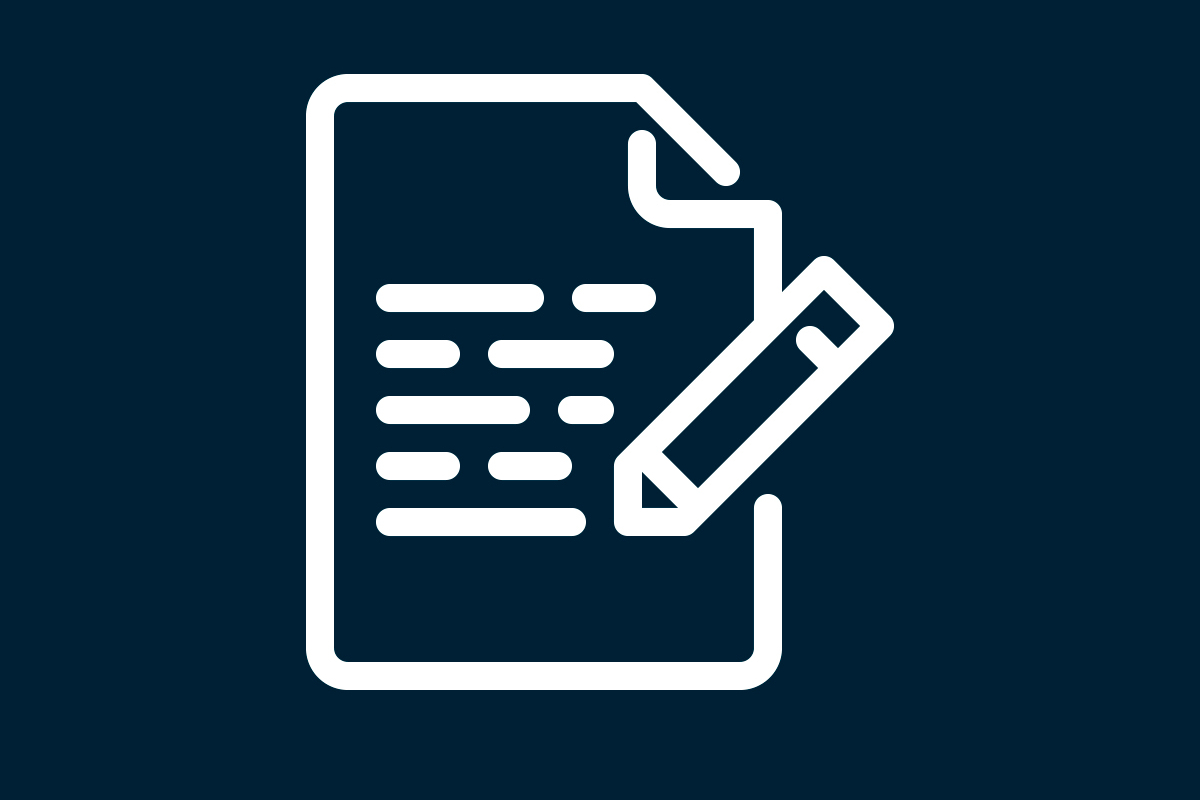Less is more: controlled language for more efficient documentation
The verb “to sanction” can mean “to approve” as well as “to punish”. The Oxford English Thesaurus apparently lists 380 synonyms for the word “good”. In Thomas Mann’s original German version of his novel “Joseph and his brothers” is a sentence containing 347 words. Three bits of trivia that hint at the diverse, and sometimes contradictory, nature of language. But while fiction and poetry can draw on a deep well, technical writing is more wary. Is that comprehensible? Who, after 347 words, can remember how the sentence even began? Can I be certain that all my readers will correctly interpret an ambiguous word? And how are all the various synonyms going to be translated? Many technical writing teams nowadays use a “controlled” language to banish these uncertainties.

Controlled language – who’s controlling what?
The expression “controlled language” is in common usage, but does sound a little odd. It’s not really “controlled” in the sense that it’s “regulated” or “managed”, it’s more a case of the choice of words and phrases being “restricted”. That’s really the most accurate definition: the diverse possibilities that language offers are restricted and (more rigorously) administered. A selection of words and phrases is chosen, and it is this choice that then becomes definitive for the creation of texts and documents. In other words, a controlled language is not something new or invented, it is simply a defined subset of an existing human language such as English or German.
The choice made from the underlying language is naturally not arbitrary. The purpose of a controlled language is to create text that is, as far as possible, unambiguous and easy for the target group to understand. In addition, it should lend itself to further processing, e.g. translation. To achieve this objective, vocabulary and grammar are restricted and standardised, both in a formal sense as well as in terms of content and meaning.
Vocabulary in controlled language
The regulative measures as far as vocabulary is concerned include, for example:
- Defining a permitted vocabulary: depending on the counting methodology, human languages like English or German have several hundred thousand words – controlled languages, by contrast, usually no more than 1000. When drawing up the selection, preference is frequently given to common (in other words familiar) and short words, rather than rarer and longer ones. Technical expressions (which are permitted) are then added.
- Defining the meaning of the word: the approach here is, “one word – one meaning”. Taking our earlier example of “to sanction” again, we have to decide whether it’s always going to mean “to approve” in our documentation or always “to punish”. We may even decide not to add this ambiguous word to our permitted vocabulary at all. Instead, we’ll include it in our list of explicitly forbidden expressions, where we will, however, suggest a permitted alternative.
- Eradicating synonyms: the approach in this case is, “one meaning – one word”. If something is to be closed, then the verb will always be “close”, never “shut” or “bolt”, etc.
Although such measures significantly limit the available vocabulary, they have proved themselves more than capable of describing the relevant situation. After all, diverse forms of words are not the point of documentation, whereas clarity and consistency are.
Grammar in controlled language
The regulative measures in the field of grammar include:
- Limiting sentence length: Thomas Mann may well be able to get away with publishing a sentence containing 347 words, but that would be sorely out of place in a technical document. That is why the maximum length of a sentence is often fixed.
- Reducing the syntactic complexity of a sentence: for example, not using convoluted sentences and avoiding the passive voice.
- Reducing the content-related complexity: every sentence should be limited to one content-related core; every step of an instruction to one action. Every paragraph should only address a single topic.
For certain contexts, a fixed formulation is often prescribed, for instance:
- Formulation of instructions: e.g. always an imperative infinitive (“Close the door”) or always in the “polite” form (“Please close the door”).
- Formulation of conditions, goal-oriented actions, alternative instructions, etc.: “Press the button to close the door”, “Close the door by pressing the button”, “If you want to close the door, press the button”, “Press the button if you want to close the door”, etc. To achieve consistency, the construction of such sentences can be defined right down to their conjunctions.
- A similar approach is used for warning and safety information, headings, descriptions, etc.
Using controlled language
Controlled language methodologies already exist for some languages, particularly English (e.g. Simplified Technical English (STE)); there’s nothing to stop you adopting these, although it’s always possible to devise a set of company-internal rules according to your own requirements. The extent to which you can or must follow the rules when developing a controlled language is nowhere set in stone. If you use a Style Guide or have looked into this subject at some time in the past, then it is quite possible that you will have already come across one or more of the points mentioned above. In fact, every Style Guide that concerns itself with the definitions and restrictions governing the use of language will be mapping out a more or less precisely defined controlled language.
A Style Guide is also a way of making people aware of the parameters of the controlled language. To monitor adherence to these parameters, specialist software, known as Controlled Language Checkers, and modern component content management systems, such as our own SCHEMA ST4, also exist that provide authors with the relevant tools. An Authoring Memory function will suggest permitted sentences and formulations as the author types. Adherence to the permitted vocabulary, sentence length, sentence construction, etc., can, for example, be checked automatically and corrected as soon as any non-compliance is detected.
Advantages of controlled language
Less is more – using a controlled language to restrict the use of linguistic expressions results in consistent structures and a defined vocabulary. The upshot of this is:
- Greater legibility and comprehension
- Greater consistency and clarity
- Time and cost savings in any subsequent processing, e.g. texts are easier to translate and there is a higher match rate when using translation memory systems.
The extent to which controlled language is used is therefore a topic of interest to every technical writing team!
Other articles from Quanos
This might also interest you

„Doku-Lounge“: Auf dem roten Sofa mit Kerstin Berke und Philipp Eng
Moderatorin Kerstin Berke und Marketingspezialist Philipp Eng sind das Duo vor und hinter dem Mikro der „Doku-Lounge“…